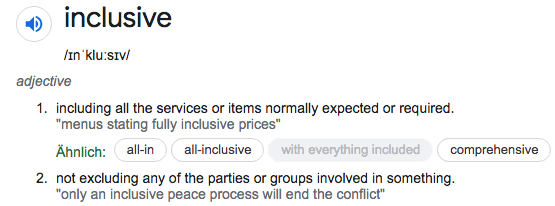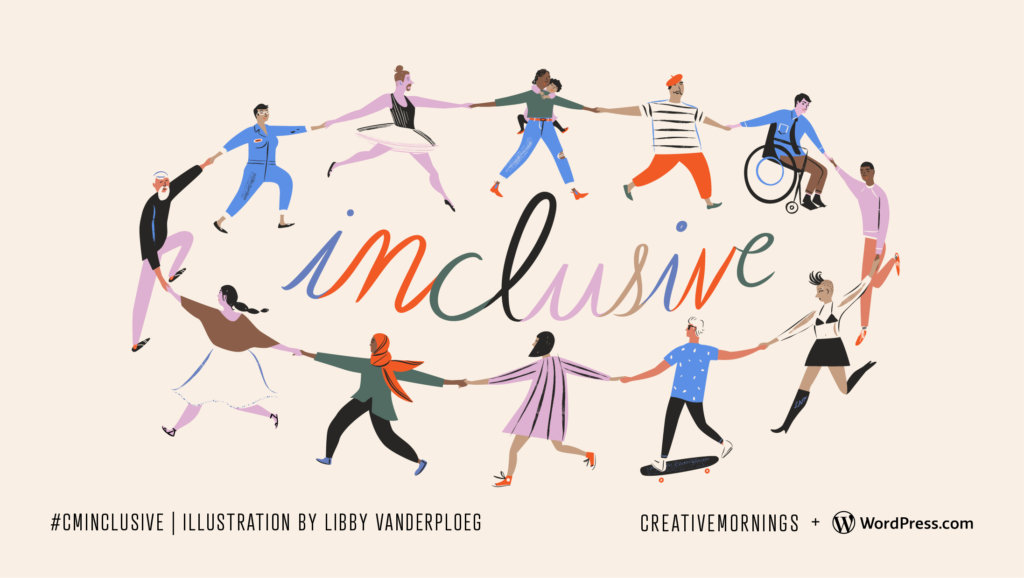Hello and welcome back.
The last entry was about Universal Design, which is a design approach / a paradigm / a strategy that has the overall goal to create environments that can be used by everyone to the greatest extent possible.
This entry will be about Inclusive Design which is often mentioned synonymously in literature for either universal design or accessibility. Therefore, one of the goals for this entry is to deeply understand the meaning of inclusive design and to illustrate the difference (if there actually is a difference) to universal design and other design methods.
I started by googling the terminology inclusive design and I came across a wide variety of definitions. Sometimes it is equated with universal design, then it is described as not quite the same but very similar, then it is explained in comparison to accessibility.

In the course of researching I came across Kate Holmes, who works for Microsoft and has established inclusive design in the company structure, especially in the design process.
In her article „What You’re Getting Wrong About Inclusive Design“ she states out a major point what inclusive design really is and not is. It is a design process not a design result.
Thus inclusive design is not only about trying to design for an outcome to be accessible, usable, experienceable for everyone. It is a methodology for how to approach design for creating design that can be used by a diverse group of people. In the digital realm, the process of inclusive design starts by identifying situations where people are excluded from using particular technologies. Recognizing that exclusion can happen to anyone depending on the particular circumstances is a key element to inclusive design methodology.

Inclusive design and accessible design both focus on the idea that disabilities happen at the intersection where people and their environments interact. Inclusive design, in particular, recognizes that solutions that work for people with a disability are likely to also work well for people in diverse circumstances.
The terminologies inclusive design, accessible design and universal design are often mixed or confused, because there are also many similarities. They are connected by the shared goal to create digital products that can be used by the widest possible group of people, regardless of their current circumstances. To make it clearer to understand the interference, I would place the term Universal Design in the hierarchy as a paradigm above inclusive- and accessible design, as it represents the intersection of their commonalities, and describe Inclusive Design as the process oriented strategy approach and Accessibility as a benchmark for an outcome of design.
As a conclusion, when designers pay attention to the people who are actually using the products they develop, and how they adapt when something doesn’t work well for them, UX designers can use inclusive design principles to create user-friendly products that work for the majority of people and meet accessibility guidelines in the process.

Sidenote:
In the course of researching inclusive design, I came across the term "discursive design", which is about design that encourages discourse. This term provides an interesting component to the establishment of UX and has therefore been added to the Glossary, where you are welcome to read about it.
Sources:
https://www.fastcompany.com/90166413/what-youre-getting-wrong-about-inclusive-design
https://www.fastcompany.com/90243282/the-no-1-thing-youre-getting-wrong-about-inclusive-design
https://www.toptal.com/designers/ui/inclusive-design-infographic
https://mitpress.mit.edu/books/mismatch
https://inclusivedesignprinciples.org/#principles
https://en.wikipedia.org/wiki/Inclusive_design
https://wiki.selfhtml.org/wiki/Inclusive_Design
https://uxplanet.org/6-principles-for-inclusive-design-3e9867f7f63e
https://inclusivedesigntoolkit.com/whatis/whatis.html
https://careerfoundry.com/en/blog/ux-design/beginners-guide-inclusive-design/
https://creativemornings.com/themes/inclusive